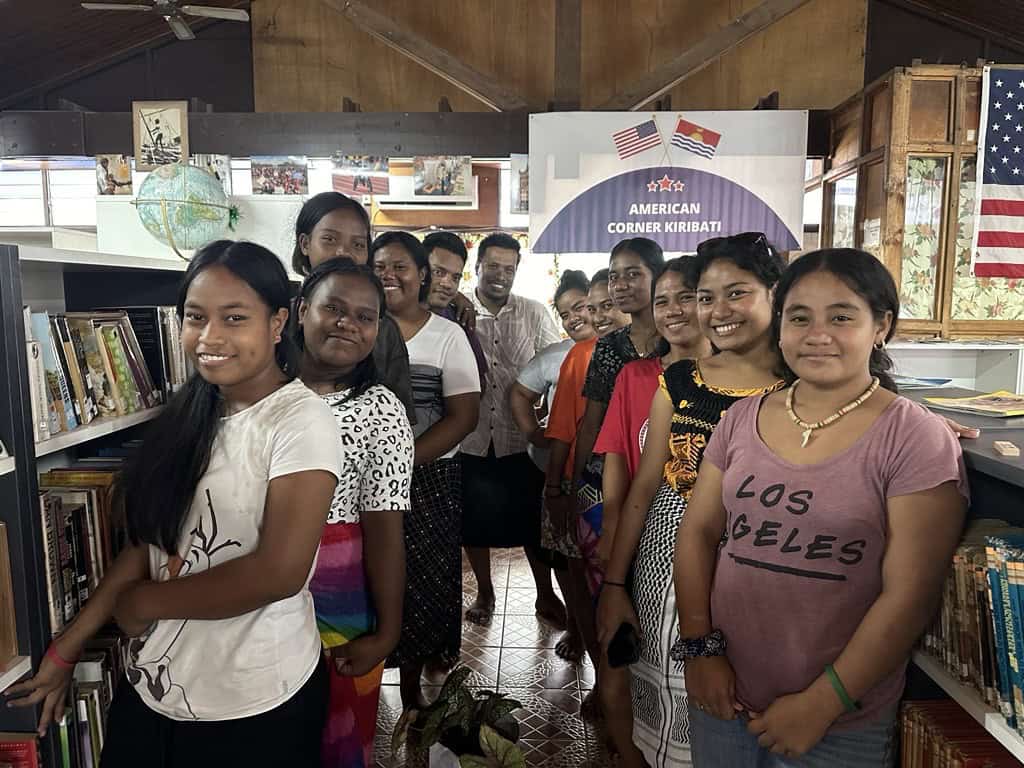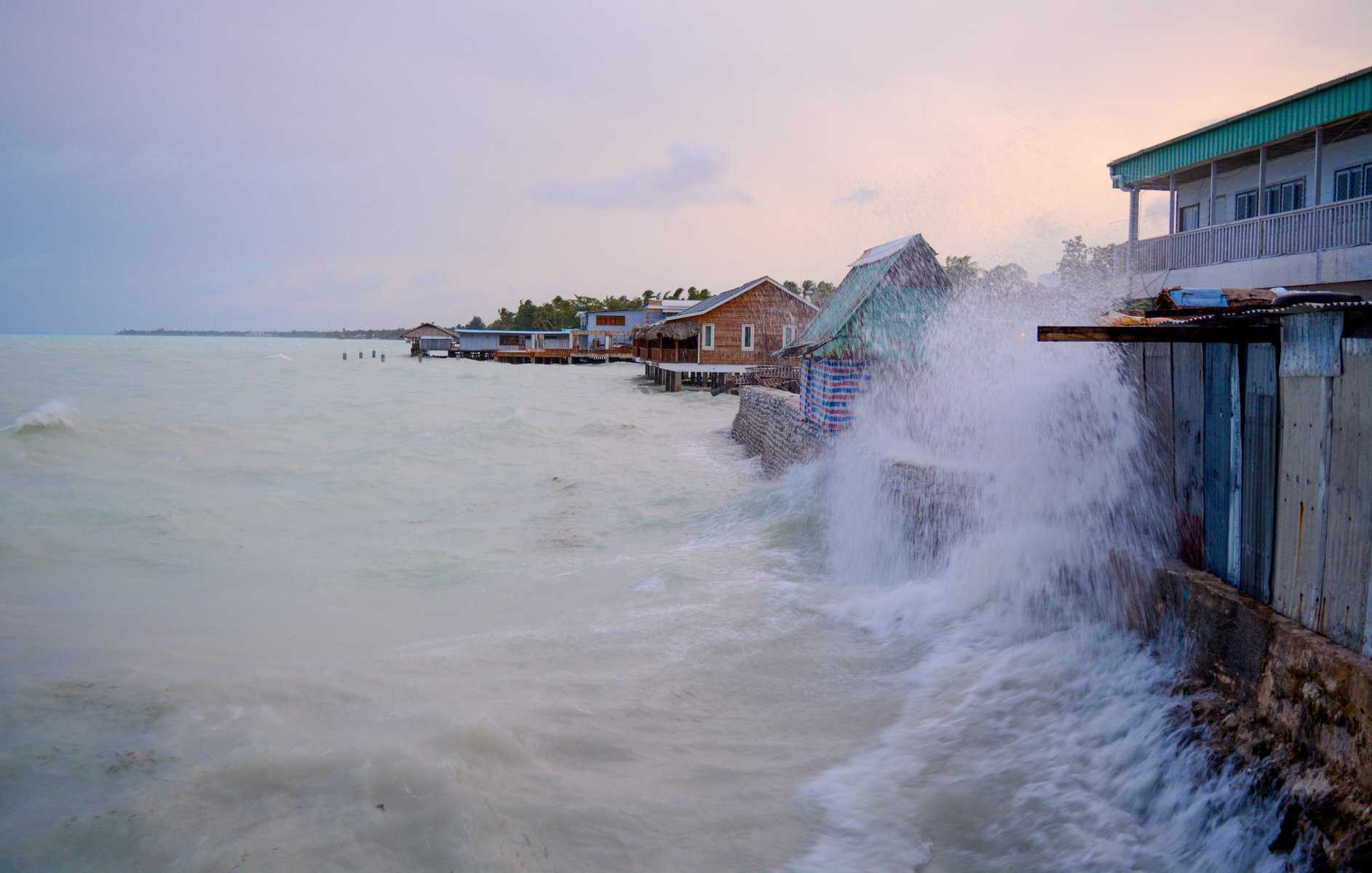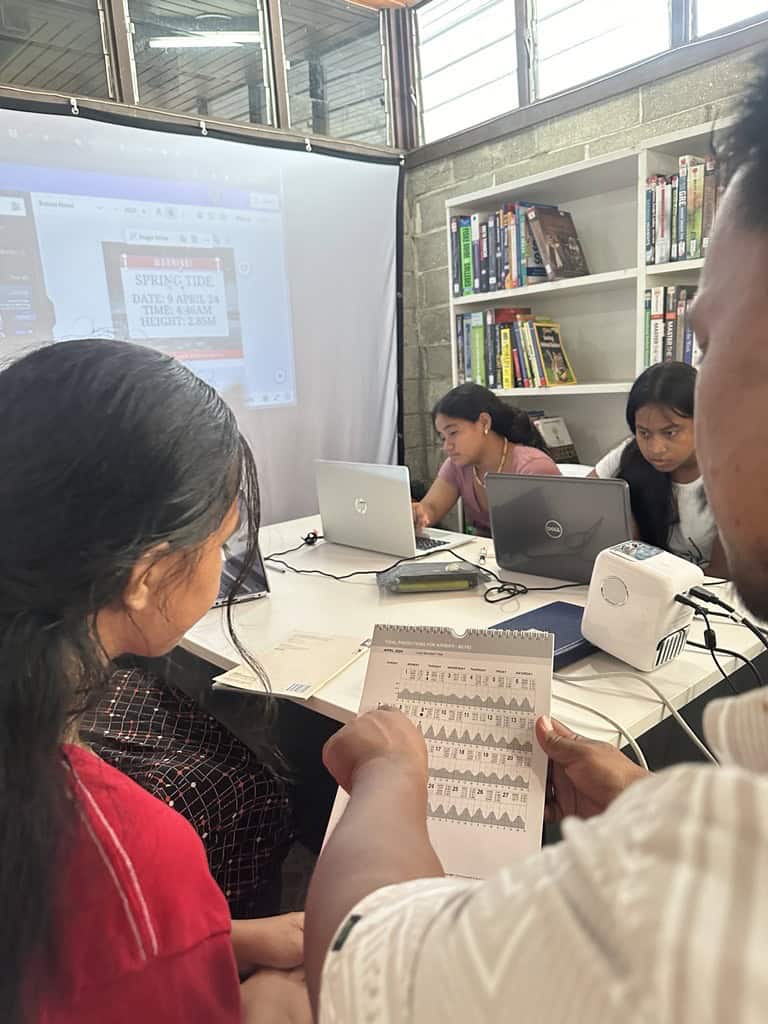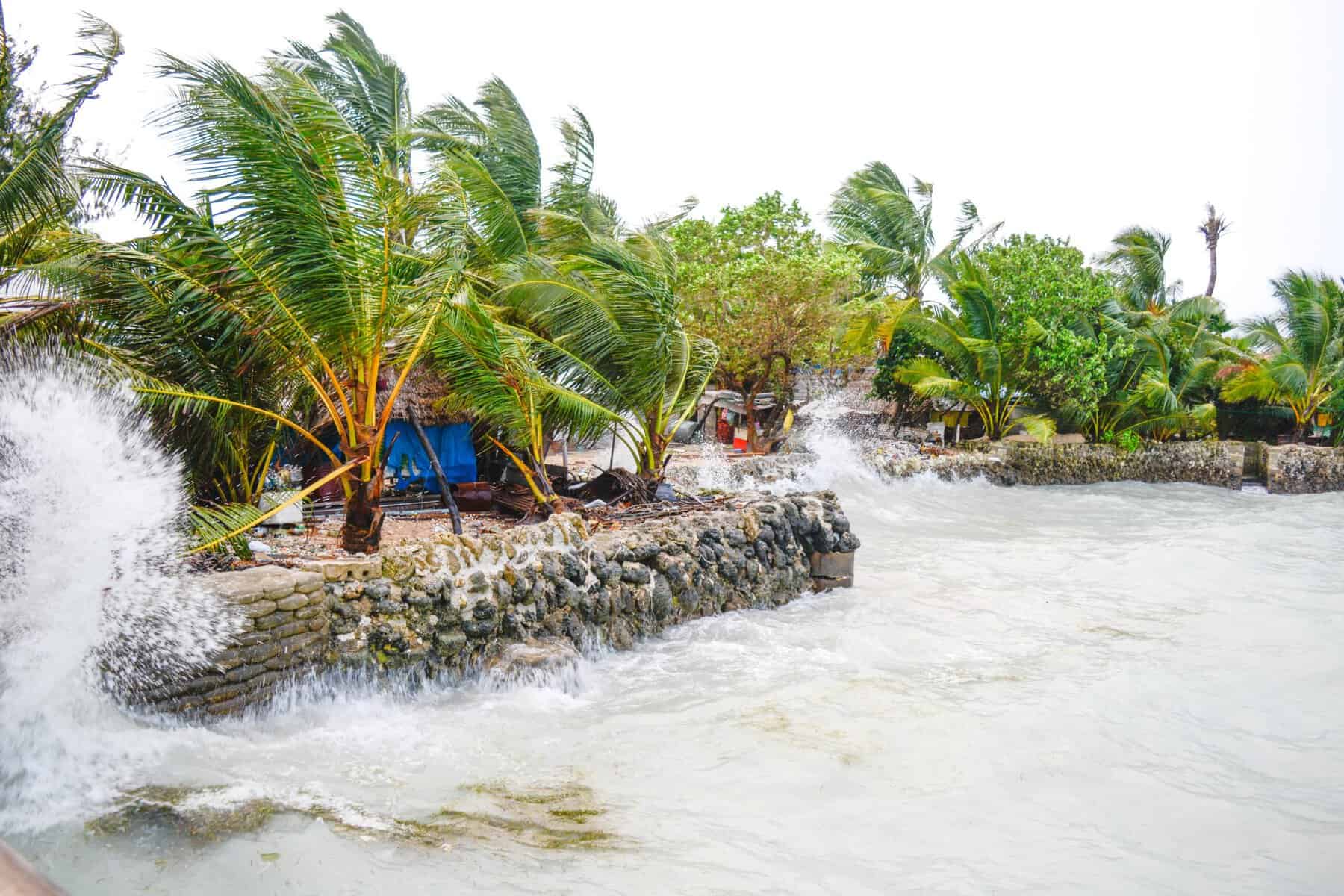Early Warning Systems & Climate Science Communication
Born and raised in Kiribati with a passion for ocean conservation and youth mobilisation for ocean-based climate action, Tiein Taebo assists with the coordination of the Tungaru Youth Action network – the first youth-led organisation in Kiribati, serving as Vice President. Tiein vehemently believes that the I-Kiribati culture and the identity of people from the Big Ocean State are strongly connected to the ocean. As a young woman on the frontline of severe hazards, such as drought, king tides and marine heatwaves, she spends her weekends and evenings organising training and knowledge exchange programmes to support the youth of Kiribati.
“As a young person in this era, basic life skills also include knowing how to interpret climate information and how to use digital communications tools.” — Tiein Taebo, Tungaru Youth Action

On World Meteorological Day (23 March) this year, Tiein organised a one-day training on how to interpret a tide predictions calendar and use online software to create early warning graphics on mobile
devices.
Participants were also trained on how to use social media to share the early warning alerts to their social networks to encourage their family and friends to take early action. This training was funded by the European Union-funded Intra-ACP Climate Services and Related Applications Programme (ClimSA) and delivered by Patricia Mallam, Knowledge Broker for the Pacific Project. The training was supported by Erietera Aram, Country Coordinator for the Australia Pacific Climate Alumni Network (APCAN).
Held in the American Corner at the Kiribati National Library and Archives in Bariki, Tarawa, twenty-two youth aged between 14 to 25 years attended the training, of which twenty were female. Despite the seriousness of the training, it was peppered with sporadic bursts of jokes and laughter, as the young participants learned to interpret a tide predictions calendar.
The tide predictions calendar used for this training was specific to Betio and provided by the Climate and Oceans Support Programme in the Pacific (COSPPac). These tide prediction calendars are available in printed versions from National Meteorological Services in most Pacific Island countries and online on the Pacific Oceans Portal Library.
After successfully grasping the skill to interpret the tide predictions calendar, the youth were introduced to Canva, a versatile graphic design tool used to create visually engaging content. Each of the youth developed compelling graphics and some even created short videos, with detailed information about the upcoming king tides in Betio.


During this practical activity, all the participants shared images and videos of king tide events that they had captured previously, illustrating the interest and skills in content creation that youth in this information age possess. In less than forty-five minutes, more than 10 digital communications products were created.
The final session in this training focussed on identifying distribution channels and the members of the community who needed the easy-to-understand information. Group chats for family and friends, Facebook Groups and TikTok followers were quickly identified as most appropriate for these messages. Most importantly, the youth highlighted that persons with disabilities needed to receive this information, and in doing so, adapted some of the content created by adding subtitles, audio and colours.
“I strongly believe that the training on interpreting climate information products and using online apps on mobile devices are crucial for information dissemination in a generation where the internet and social media are more commonly used to communicate,” reflected Tiein at the end of the training.
Tiein shared that youth in Kiribati are constantly accessing information online, no matter where they are, as long as they have an internet connection. This has become a basic life skill – one that has the potential to save lives when used with intention.
“This training is so timely because the next king tides occur in 2-weeks time, and according to the tide predictions calendar, they occur at in the early hours of the morning (around 4:46am) when most are in deep sleep and least likely to be prepared. We have time to send out early warning messages and ensure our families and communities are prepared,” she explained.
As a result of this training, at least 80% of the youth trained were able to successfully develop early warning messages in the form of videos and graphics on their mobile devices and send them using their online social networks to their families, friends and members of their community.
From interpreting climate information, to creating compelling content and sharing it with those who would be able to act, this youth-led activity provides insight into how the landscape of early warning systems is evolving and where interventions can be made to save lives.

- To find out more about the Intra-ACP Climate Services and Related Applications Programme, visit www.sprep.org/climsa.
- For more information on Tide Prediction Calendars, please contact the National Meteorological Services in your country.
